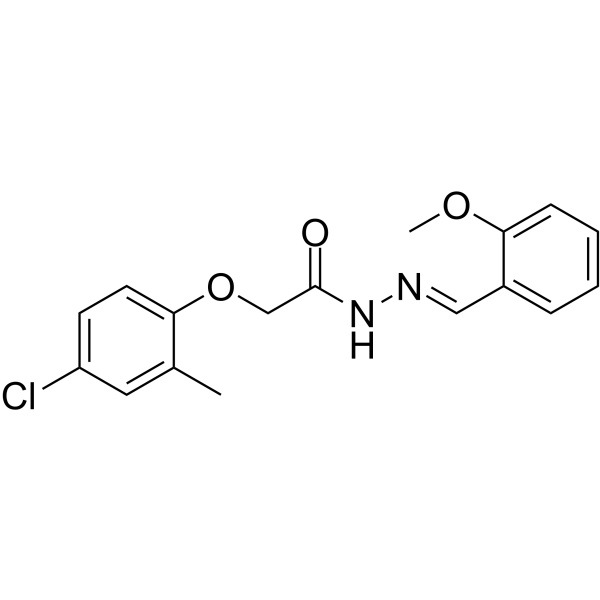
Ani9
CAS No. 356102-14-2
Ani9( Ani 9 )
Catalog No. M27849 CAS No. 356102-14-2
Ani9 is a high selective blocker of Anoctamin1 (ANO1)/transmembrane protein 16A (TMEM16A) with an IC50 of 77 nM and can be used in studies about ANO1 and the treatment of ancer, hypertension, pain, diarrhea and asthma.
Purity : >98% (HPLC)
 COA
COA
 Datasheet
Datasheet
 HNMR
HNMR
 HPLC
HPLC
 MSDS
MSDS
 Handing Instructions
Handing Instructions
| Size | Price / USD | Stock | Quantity |
| 5MG | 68 | Get Quote |


|
| 10MG | 120 | Get Quote |


|
| 25MG | 255 | Get Quote |


|
| 50MG | 430 | Get Quote |


|
| 100MG | 620 | Get Quote |


|
| 500MG | 1332 | Get Quote |


|
| 1G | Get Quote | Get Quote |


|
Biological Information
-
Product NameAni9
-
NoteResearch use only, not for human use.
-
Brief DescriptionAni9 is a high selective blocker of Anoctamin1 (ANO1)/transmembrane protein 16A (TMEM16A) with an IC50 of 77 nM and can be used in studies about ANO1 and the treatment of ancer, hypertension, pain, diarrhea and asthma.
-
DescriptionAni9 is a high selective blocker of Anoctamin1 (ANO1)/transmembrane protein 16A (TMEM16A) with an IC50 of 77 nM and can be used in studies about ANO1 and the treatment of ancer, hypertension, pain, diarrhea and asthma.
-
In Vitro——
-
In Vivo——
-
SynonymsAni 9
-
PathwayMembrane Transporter/Ion Channel
-
TargetChloride Channel
-
RecptorHIV-1
-
Research Area——
-
Indication——
Chemical Information
-
CAS Number356102-14-2
-
Formula Weight332.78
-
Molecular FormulaC17H17ClN2O3
-
Purity>98% (HPLC)
-
SolubilityIn Vitro:?DMSO : ≥ 125 mg/mL (375.62 mM)
-
SMILESCOc1ccccc1\C=N\NC(=O)COc1ccc(Cl)cc1C
-
Chemical Name——
Shipping & Storage Information
-
Storage(-20℃)
-
ShippingWith Ice Pack
-
Stability≥ 2 years
Reference
1.Peter K Cheung, et al. A Parallel Synthesis Approach to the Identification of Novel Diheteroarylamide-Based Compounds Blocking HIV Replication: Potential Inhibitors of HIV-1 Pre-mRNA Alternative Splicing. J Med Chem. 2016 Mar 10;59(5):1869-79.
molnova catalog



related products
-
Fenamic acid
Fenamic acid is a chloride channel blocker that causes renal papillary necrosis in rats. Fenamic acid serves as a parent structure for several nonsteroidal anti-inflammatory drugs (NSAIDs), including flufenamic acid, tolfenamic acid, mefenamic acid, and meclofenamic acid.
-
Guanidinoethyl sulfo...
Guanidinoethyl sulfonate is a competitive glycine receptor antagonist.
-
Brucine sulfate hept...
Brucine is an alkaloid that acts as an antagonist at glycine receptors and paralyzes inhibitory neurons.



 Cart
Cart
 sales@molnova.com
sales@molnova.com


